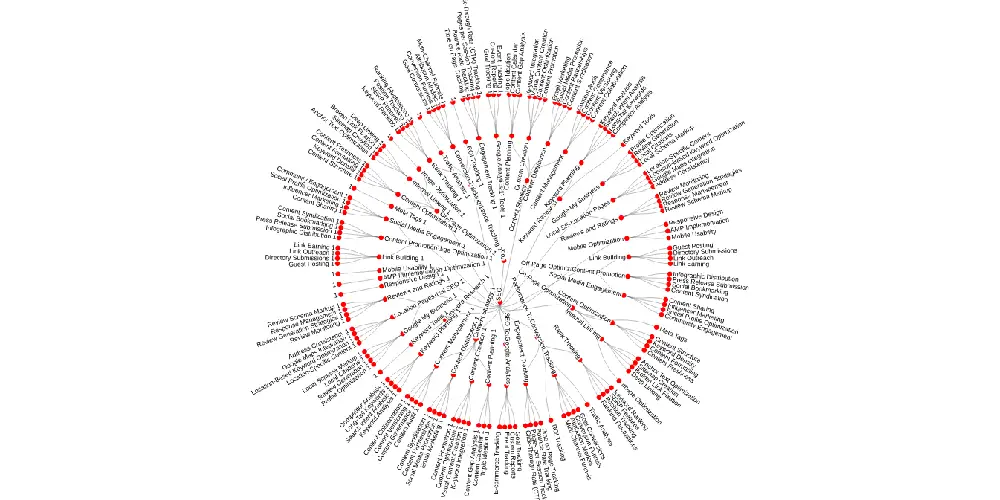Last Updated on November 25, 2025
What Are Content-Optimization Tools & Why They Matter
A content-optimization tool helps you take an existing draft (or plan a new piece) and align it with what search engines and users expect.
More specifically, such tools help you:
- Identify topical gaps (what competitors cover that you don’t)
- Use semantic and NLP-based keywords (related words, not just your primary query)
- Optimize structure, readability, internal/external linking, format
- Track a content score or grade that signals how well your piece aligns with ranking factors
- Monitor and refresh content over time (content decays)
In short: you still need creativity, expertise and original voice — the tools help you reduce guesswork and align with what’s proven to work.
Key Features to Look for in Content Optimization Tools
When choosing a content optimization tool, focus on features that truly strengthen your content’s topical depth, readability, and search performance—not just keyword density. A strong platform should provide keyword suggestions, including NLP keywords, semantic terms, and entity-based recommendations, along with guidance on how naturally and frequently they should appear.
NLP keywords help Google understand the context and intent of your content, while semantic and entity keywords build topical relevance and clarity. Together, they increase your chances of ranking for multiple related queries and help your content demonstrate greater topical authority.
Beyond keywords, evaluate the tool’s on-page optimization features. High-quality platforms typically offer:
- Ideal word count based on top-performing competitors
- Recommended heading structure (H1, H2, H3) for logical flow
- Suggested number of visuals to enhance engagement
- Readability and tone improvements
- Internal linking suggestions to strengthen site architecture
- External linking recommendations to credible, authoritative sources
Internal linking strengthens your site’s hierarchy and helps distribute authority, while external links to trusted sources increase credibility—both supporting stronger SEO and aligning with Google’s EEAT framework.
Modern content optimization tools should also incorporate EEAT signals. Google prioritizes content that demonstrates:
- Experience – Showing real-world knowledge, insights, or first-hand use
- Expertise – Accurate, well-researched information
- Authoritativeness – References to credible sources, citations, or expert authors
- Trustworthiness – Accurate facts, transparent sourcing, and reliable external links
Tools that highlight opportunities to add authoritative references, expert opinions, original insights, or trustworthy external citations help you naturally strengthen EEAT, improving your chances of ranking higher.
Look for platforms that offer a meaningful content score based on relevance, depth, structure, and EEAT factors, rather than outdated keyword-count scoring. The best systems evaluate how comprehensively your content covers a topic compared to competitors.
Additionally, SERP analysis and competitor comparison are essential. These features break down what’s ranking on Google, show the topics competitors cover, highlight content gaps, and reveal missing entities or external sources. This helps you create content that is not only optimized but also more complete and more authoritative.
This is especially important because Google rewards comprehensive, high-EEAT content. The more relevant subtopics you cover, the more credible your references, and the clearer your structure, the stronger your chances of ranking well.
Here are several noteworthy platforms and what they bring to the table.
1. SEO Content Optimization Tool
AIHelperHub’s SEO Content Optimization Tool focuses on making semantic SEO accessible for small and mid-sized teams. It pulls keywords, entities and semantic terms directly from Google’s top 5 ranking pages, processes them through NLP, and gives you real-time SEO scoring. The tool also performs content gap analysis, technical SEO checks, and semantic clustering to help writers understand what Google expects for a topic.
Because the free version has no usage limits, it becomes a practical replacement for expensive platforms for SMEs, freelancers and early-stage creators.
Strengths
- NLP-Powered Recommendations
Extracts semantic terms and contextually relevant keywords using real Google SERP signals. - Content Gap Analysis
Shows sub-topics and concepts competitors cover that your draft is missing. - SEO Scoring System
Rates your content based on semantic coverage, structure, keyword alignment, link usage and more. - Technical SEO Checks
Highlights structural issues like missing H2/H3s, thin content sections, weak internal linking and readability gaps. - Free Version With No Limitations
Unlike Surfer/Clearscope/MarketMuse which restrict usage in free tiers, this tool supports unlimited queries — ideal for teams with small budgets. - Simple, Clean Interface
Designed for writers and marketers who want effective optimization without complex dashboards or configuration.
Weaknesses
- Not yet as enterprise-focused as MarketMuse (which offers full-site inventory audits and enterprise workflows).
- Content briefs are lighter compared to premium platforms that offer in-depth outlines and research packs.
- Does not include a full keyword research suite like Surfer or Ahrefs (it focuses on semantic optimization rather than broader SEO research).
Ideal for SMEs, startups, and content teams needing fast, NLP-driven optimization without expensive subscriptions. Great for writers who want simple, accurate semantic suggestions and an easy scoring workflow.
2. Surfer SEO
Surfer SEO platform is a content optimization tool that helps SEO professionals and writers align their content with what’s actually ranking in Google. It provides a real-time content editor, SERP analysis, AI outline generation, and content auditing so you can write optimized content that matches what top-performing pages are doing.
Strengths:
- Content Editor gives real-time SEO feedback as you write — suggesting keywords, structure, and scoring your content.
- SERP Analyzer helps you analyze top-ranking pages to uncover common patterns: word count, headings, and strategies.
- AI-powered outline generator can create topic-structured outlines quickly, saving time on planning.
- Integration with Google Docs and WordPress makes it convenient to optimize content in your usual writing environment.
- Topic clustering and content planning help build strategic content hubs around themes.
- Plagiarism checker to ensure originality before you publish.
- Real-time scoring motivates writers and helps maintain focus on SEO-relevant metrics.
- Good support and educational resources; tool is continuously evolving with new features.
Weaknesses:
- Relatively high cost, especially if using AI-writer add-on or on lower plans.
- Learning curve: mastering advanced features like SERP Analyzer or the AI functions can take time.
- Some users find suggestions irrelevant or too rigid; over-optimization risk is real.
- Query / credit limits on lower-tier plans restrict how much you can use the AI or content editor.
- The content editor’s suggestions (especially for internal links) can sometimes feel unnatural or forced.
- Certain features (like AI writer) require additional payment; not included in base plan.
- For very competitive or niche topics, the data-driven suggestions may miss nuance or human insight.
Best for: Content teams, frequent blog publishing, content writers who want feedback as they write.
3. MarketMuse
MarketMuse platform is a powerful content‑intelligence platform designed to help marketers, content strategists, and SEO teams plan, research, and optimize content at scale. Its strength lies in deep topic modeling, competitive gap analysis, and AI-driven content briefs — making it more than just a keyword tool, but a strategic content advisor.
Strengths:
- Uses advanced AI and semantic modeling to identify content gaps and suggest subtopics you should cover.
- Heatmap and competitive analysis let you compare your content with top‑ranking pages to understand where you’re missing coverage.
- Provides content briefs for writers, helping to streamline research and ensure comprehensive coverage.
- Optimizes existing content by evaluating “topic depth” and suggesting what to add to improve topical relevance.
- Offers internal and external linking suggestions as part of its optimization.
- Strong for enterprise content teams: supports large-scale content planning and editorial workflow.
Weaknesses:
- Very expensive — pricing is quite high, which can be a barrier for small teams or solo creators.
- Learning curve is steep, especially for users who are not deeply familiar with SEO or topic-modeling concepts.
- Limited credits or queries in many plans; you might hit usage caps for research or optimization.
- The AI-powered “first draft” or content-generation credits are often limited, reducing how much you can automate writing.
- Few link-sharing features: sharing briefs or insights with writers can be less seamless.
- Interface can be complex; some users find the platform overwhelming or not very intuitive.
Best for: Large content operations, multiple writers, strong content apparatus in place.
4. LinkStorm
LinkStorm is an intuitive internal linking assistant that uses advanced AI built for SEOs and publishers. Designed with ease of use in mind, you simply input your website’s URL and LinkStorm will generate contextual link recommendations automatically—no complex setup required. Its distinct features are:
- Internal Link Suggestions
- AI-optimized Anchor Text
- Manual and Automated Linking
- Browser-Based Tool
If you’re tired of manually digging for internal link spots, this tool makes the process fast and scalable. It’s offered on a freemium model—free for basic usage and scalable for larger sites with paid plans for broader URL coverage.
5. Semrush Writing Assistant
Semrush Writing Assistant is an advanced content optimization tool integrated into the wider Semrush ecosystem. It provides real-time guidance on SEO, readability, tone consistency, and originality, making it highly useful for writers, marketers, and SEO professionals who want to create search-optimized and user-friendly content directly within their preferred editors.
Strengths
- Real-Time SEO Guidance: The tool offers keyword suggestions, including semantic keywords, and shows how effectively you’re using them. It also analyzes top-ranking competitors and recommends target word count, subtopics, and structural improvements.
- Readability & Tone Improvements: It detects readability issues such as long sentences, passive voice, or unclear phrasing, and helps adjust the tone to match your brand voice.
- Built-In Plagiarism Checker: A strong plagiarism detection system helps ensure originality—very useful for teams or agencies managing multiple writers.
- Smooth Integration With Writing Platforms: Semrush Writing Assistant integrates with Google Docs, WordPress, and Microsoft Word, allowing you to optimize content without switching between tools.
- Strong Part of a Larger SEO Suite: If you’re using Semrush for keyword research, competitor analysis, or content audits, the Writing Assistant connects seamlessly with this data, creating a unified workflow.
Weaknesses
- High Cost: Accessing the Writing Assistant requires a paid Semrush subscription, which may be expensive for solo writers or small teams.
- Steep Learning Curve: Because Semrush includes many features, new users may feel overwhelmed navigating all the settings and optimization suggestions.
- Occasional Scoring Inconsistencies: There can be discrepancies in metrics like word count or SEO score, and sometimes suggestions lack explanation on why they matter.
- Risk of Formulaic Writing: Writers may follow every recommendation too literally, which can lead to content sounding generic instead of unique or insightful.
6. Ahrefs AI Content Helper
Ahrefs AI Content Helper is a newer AI-powered content writing and optimization tool built into the Ahrefs platform. It helps users research, outline, write, and optimize content using Ahrefs’ rich keyword, SERP, and competitor datasets, making it strong for SEO-driven content strategy.
Strengths
- Powered by Ahrefs’ Strong SEO Data: Because the tool is built on Ahrefs’ established keyword and SERP datasets, its recommendations are highly data-driven. It highlights essential subtopics, entities, and content gaps your competitors covered but you missed.
- Search Intent Matching: The tool allows you to select search intent (informational, commercial, etc.) and adapts its content suggestions accordingly. This helps ensure that your content aligns with what users and Google expect for the keyword.
- Content Scoring & Optimization Feedback: It includes a content scoring system that compares your draft with top-performing pages and highlights missing sections, headings, or important keywords to improve comprehensiveness.
- Built-In AI Writing Tools: The inline AI tools can paraphrase, expand, rewrite, or summarize text. This helps streamline the writing process and reduce time spent brainstorming or editing.
- Strong Focus on Topical Depth & EEAT: The tool nudges writers to add credible sources, expert insights, and relevant subtopics—aligning content more closely with Google’s EEAT expectations.
Weaknesses
- Interface and Usability Issues: Some users report that the editor can occasionally feel slow or unpolished, with features like auto-save not performing reliably.
- Inconsistencies in Content Scoring: The content score may fluctuate unexpectedly with small edits, and sometimes does not fully reflect whether the content is actually high quality or well-optimized.
- Limited EEAT Guidance: Although it encourages authoritative content, it doesn’t clearly identify specific EEAT-related gaps such as missing expert quotes, case studies, or first-hand experience—these still require manual insight.
- Risk of Wrong Intent Selection: If you choose the wrong search intent at the start, the tool may produce irrelevant structure and content recommendations.
- Higher Total Cost: To use the AI Content Helper, you need a paid Ahrefs plan plus the AI add-on, making it more expensive than other tools on the market.
- Still in Beta (Some Features Not Fully Developed): Certain capabilities such as advanced internal linking recommendations are still being rolled out, meaning users may experience bugs or incomplete features.
Final Thoughts
Content-optimization tools are no longer optional — they are strategic enablers. The right tool helps you scale better content, faster, and more aligned with what search engines and users expect. By combining semantic analysis, real-time feedback, content-scoring and structural checks, you improve your odds of ranking — while still focusing on user value.
Pick a tool that fits your budget and team size, embed it into your workflow, treat optimization as part of the publish process (not an after-thought) — and you’ll shift from “we’ll optimise if there’s time” to “optimization is baked in”. That’s where consistent, sustainable results come from.
- Best SEO Content Optimization Tools - November 13, 2025
- People Also Search For (PASF): The Complete 2025 Guide to Smarter SEO Optimization - November 11, 2025
- Content Pruning: A Detailed Guide to Improve SEO - October 17, 2025




